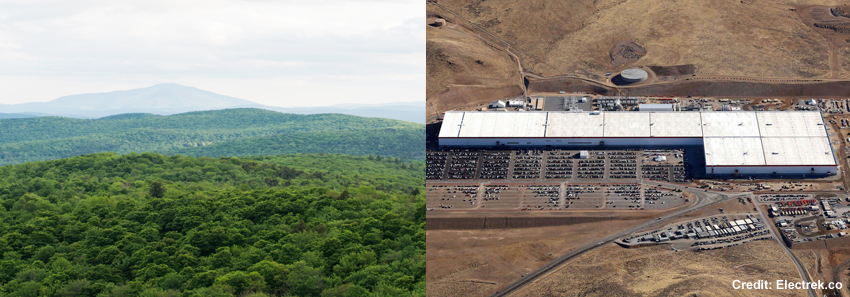Wood is Nature's Battery
Energy Available Right Now

Storing renewable energy is one of the great challenges of the current age. Until renewable energy can be stored reliably and in massive quantities, we are not able to relinquish our use of fossil and nuclear fuels. There is no single energy storage method that can solve all of our needs, though electric batteries hold much promise. Many utilities have begun limited rollout programs for installing site of use lithium-ion batteries. The utility companies and households can use these batteries for power load shifting, for off grid power, and for backup power. Tesla Powerwall is a well known example.
Apart from hydroelectric power, there is only one other renewable energy source with built-in energy storage. It has been estimated that as many 1.3 million households in 7 Northeast U.S. states could utilize the technology, which is now ready to deploy. The process begins with an elegant solar-chemical process that amazingly also sequesters carbon. Energy can be stored without losses and without polluting ecosystems. Amazingly, the energy can also be released in great quantities on demand. Advancements in automation, conversion, and control technology enable its users to experience seamless use and comfort regardless of wind speed or cloud cover. It is called advanced wood heat.
A single piece of red oak firewood weighing just 7 pounds contains enough energy to yield approximately 13 Kilowatt hours as heat in an 80% efficient boiler. 13 Kilowatt hours is the amount of energy it takes to operate a 100 Watt light bulb for 130 hours. A cord of red oak contains approximately 5760 Kilowatt hours of energy, or about 1/2 of the total electric power an average American residence uses in a year. A 40 pound bag of wood pellets contains about 94 kWh. Whereas modern Tesla batteries hold about 250 Watt hours per Kilogram, wood pellets contain about 5,000 Watt hours of energy per Kilogram.
Energy storage is one of the most compelling features of wood as a renewable energy source, but it isn't the only outstanding positive feature. Advanced Northeast thermal wood energy is natural, organic, practical, reliable, and essentially risk free compared to many of the renewable energy technologies that are currently in vogue and receiving far less scrutiny. Do you want to learn more about lithium-ion batteries? Check out this article in "Wired Magazine".
And while there has been much hype about a "Giga factory" for battery production, Northeast U.S. forests have been sustainable, giga-wood factories for centuries. The entire process of wood energy capture, storage, and release is well studied, regulated, locally controlled, and benign compared to lithium-ion battery production, use, and disposal.
From photosynthesis to fire, humankind has an extremely elegant source of energy in sustainably managed forests.



